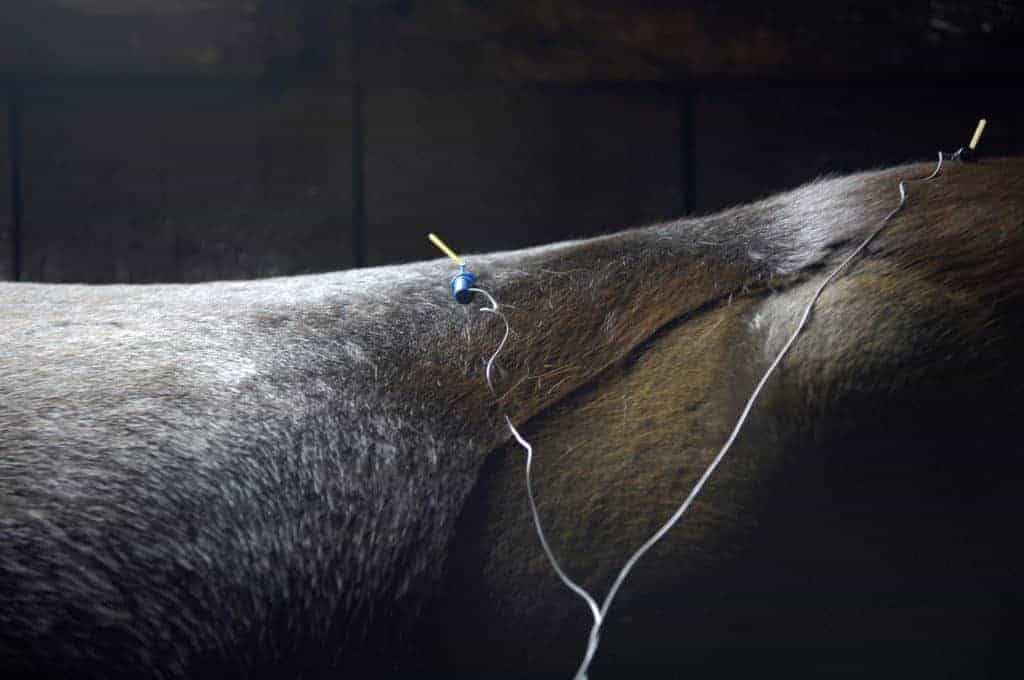Ask the Vet LIVE: Complementary Therapies
TheHorse.com presents a free Ask the Vet LIVE online Q&A about Complementary Therapies on Wednesday, Oct. 26.
TheHorse.com presents a free Ask the Vet LIVE online Q&A about Complementary Therapies on Wednesday, Oct. 26.

Exploring the evidence regarding the use of acupuncture in equine medicine.

Alternative medicine coursework in equine veterinary education has increased about 30% in the past decade.

Dr. Kevin Haussler discusses horse back problems and the use of chiropractic and complementary therapies.
“Acupuncture is real medicine, based on anatomy and physiology,” she explained. “Getting the best results comes from seeing what’s right in front of us–muscle tension, imbalances in the nervous system, and the health impact of stress, malnutrition, and under- or over-exercise. Belief systems imported from China only muddy the message.”
The first item facilitators and attendees discussed was the use of acupuncture point reactivity as an aid in the diagnosis of gastric ulcers in the performance horse. Several practitioners commented on the acupuncture points they use in this manner
Scoliosis, a curvature of the spine, is most often attributed to congenital vertebral malformations, possibly associated with malposition of the fetus in the uterus. However, researchers have linked cases of acquired scoliosis presented at Cornell
The Atlantic Veterinary College at the University of Prince Edward Island was recently awarded a grant by the Equine Foundation of Canada to support the development of chiropractic services for horses. The new service will mark the first time in
Needles are often equated with pain and discomfort; however, for a horse named Gypsy the tiny sharp objects brought relief as Mark Crisman, DVM, MS, Dipl. ACVIM, a professor in the Department of Large Animal Clinical Sciences in the
Acupuncture is not a new technique, but clinical studies proving that this treatment modality works in horses are relatively few and far between. In the journal Evidence-based Complementary and Alternative Medicine, Brazilian scientists
The two most utilized therapies in equine medicine are veterinary acupuncture and chiropractic.
Not too many years ago, proponents of massage therapy, acupuncture and acupressure, chiropractic, and other complementary or alternative therapies for animals often were dismissed as part of the lunatic fringe. Today, with apologies to Bob Dylan, the
Acupuncture can be effective in treating chronic pain and musculoskeletal disorders such as lameness, Heiderich told her listeners. She said it also can be beneficial for eye problems, mild colic, respiratory disorders, anhidrosis (the inability
Some of the more typical clinical signs horses with a neck problem might present include stiffness, muscle atrophy, patchy sweating, shortened forelimb stride, forelimb lameness, and abnormal head carriage.
The sacroiliac joint, which forms the articulation between the pelvis and the spine, is often considered a location of elusive pain in horses. However, its deep location and, thereby, limited accessibility make diagnosis (via nerve blocks) and
Back pain is often suspected in horses, but most treatments haven’t been researched much or at all. Results of a study designed to measure the effects of massage, chiropractic, and phenylbutazone (Bute) on back sensitivity were presented at the 200
Stay on top of the most recent Horse Health news with
"*" indicates required fields